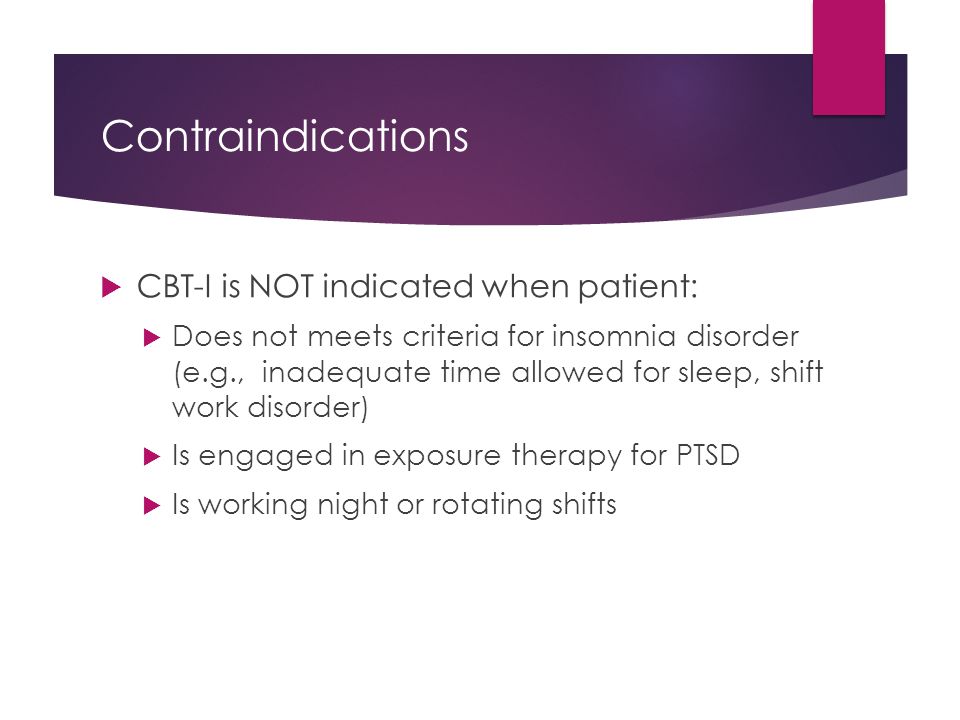Unknown Facts About Cognitive Behavioral Therapy - Sleep Education by AASM
Everything about Insomnia - Fact Sheet - ABCT - Association for Behavioral and
Living with sleeping disorders can be an obstacle. Luckily, efficient treatments are offered that can assist individuals go to sleep quicker, remain asleep, and feel more rested throughout the day. Cognitive behavioral treatment for sleeping disorders (CBT-I or CBTI) is a brief, structured, and evidence-based technique to combating the aggravating symptoms of sleeping disorders.
During treatment, a skilled CBT-I service provider assists to recognize thoughts, sensations, and behaviors that are adding to the symptoms of sleeping disorders. Thoughts and feelings about sleep are taken a look at and tested to see if they're accurate, while behaviors are taken a look at to determine if they promote sleep. A provider will then clarify or reframe misconceptions and challenges in a way that is more conducive to relaxing sleep.

Treatment might be as short as two sessions when offered by a main care physician. CBT-I is typically called a multicomponent treatment since it integrates several various methods. Sessions may include cognitive, behavioral, and academic parts. Cognitive interventions: Cognitive restructuring efforts to alter unreliable or unhelpful thoughts about sleep. Behavioral interventions: Relaxation training, stimulus control, and sleep constraint promote relaxation and help to develop healthy sleep habits.
Not known Incorrect Statements About CBT-I: Home
The order and flow of each part can differ based upon the company's approach and the unique needs of each person. Here are some common techniques used in CBT-I. Cognitive Restructuring In individuals with insomnia, unreliable or inefficient ideas about sleep may lead to behaviors that make sleep harder, which then reinforce the inefficient thoughts.


This concern may cause spending extreme time in bed to attempt to require sleep. Both concern and excessive time in bed can make falling and staying asleep more difficult. This can end up being a frustrating, nightly cycle that can be difficult to break. Cognitive restructuring starts to break this cycle through determining, challenging, and modifying the ideas and beliefs that contribute to insomnia.
Incorrect thoughts are identified, challenged, and changed with the assistance of a qualified supplier who can help in assessing them more objectively. This Website is typically designated to permit time to practice these abilities between sessions. Stimulus Control Lots of people with insomnia begin to fear their bed room, associating it with wakefulness and disappointment.
UNDER MAINTENANCE